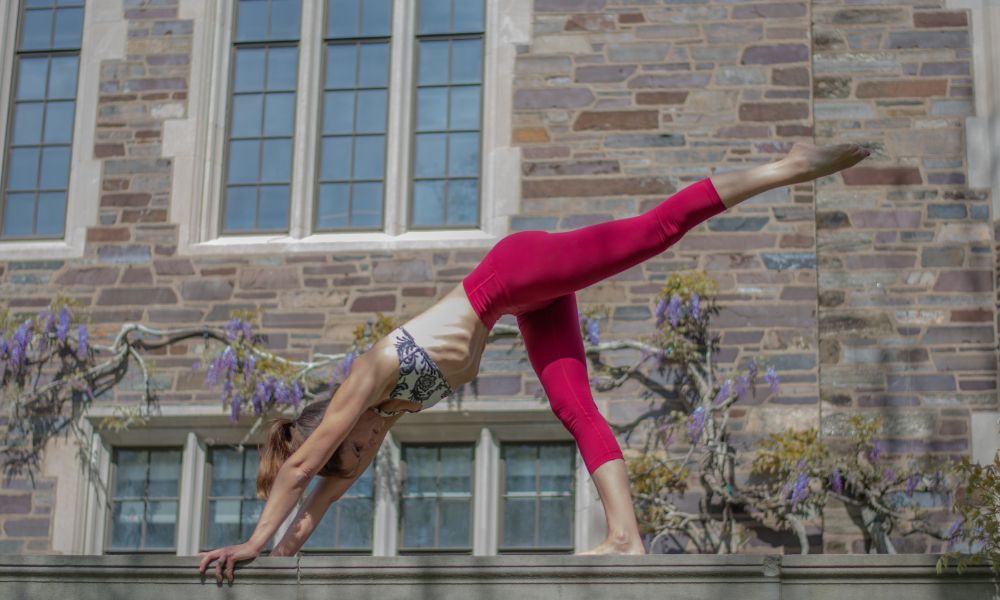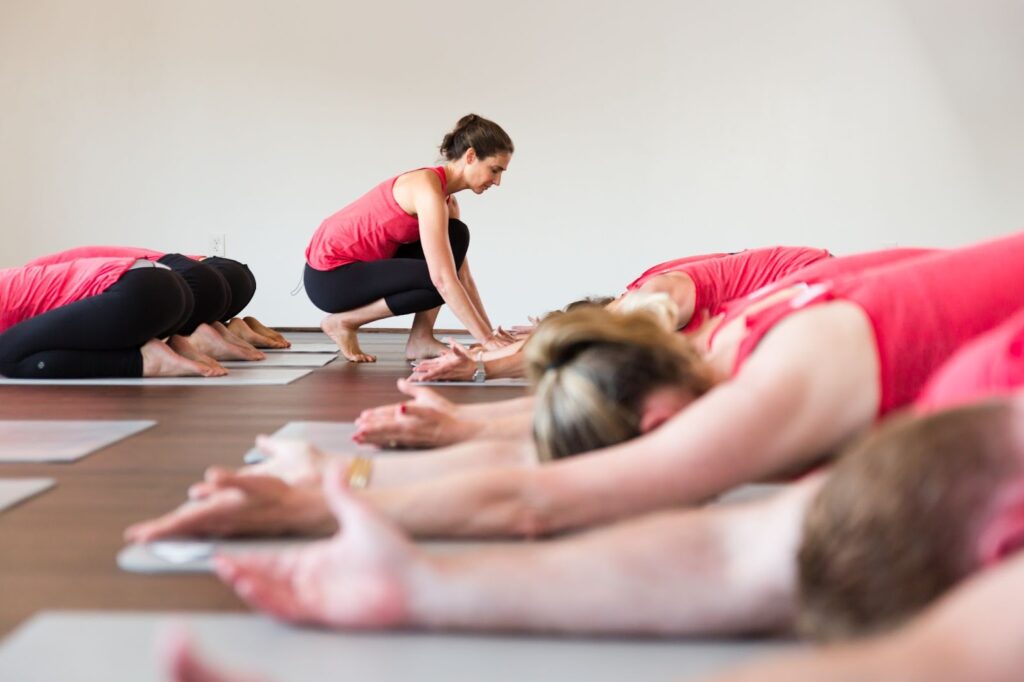The lumbar spine consists of 5 vertebrae and is surrounded by layers of muscle and connective tissue. Encapsulated by layers of fascia, the lumbar spine is the home of the energetic hub of our central nervous system – the spinal cord. This wonderful playground of tissue and bone gives us the capacity to move in a variety of ways and remain upright when we want to be. Unfortunately, low back pain is a major issue in our world, and we spend millions of dollars a year trying to figure out how to keep our lumbar playground from becoming a garbage pit of pain, dysfunction, and inflammation.
Yoga for increased stability
So, how do you have a happy low back? We give it what it craves! Stability, mobility, and adaptability. Many chronic lumbar conditions are easily preventable through proactive healthy lifestyle changes that include a daily movement practice, healthy food and drink choices, and stress management. Each month, in a series of three articles, you are going to learn what to do to develop a stable, mobile, and adaptable spine with yoga so you can live a happy, back-pain free life!
Let’s dive in with a chat about stability. The definition of stability is the state of being firmly fixed. Our lumbar spine gains stability through the natural shape of its vertebrae, with a thick and massive vertebral body. These large structures were designed to hold the weight of our entire upper body. The lumbar spine can handle a lot of force because of its natural anatomy. The 5th lumbar vertebra attaches to the sacrum. Through the stability of the sacrum, weight is transferred from the spine to the pelvis. The bony structures of the lumbar spine are supported by joints, discs, ligaments, tendons, muscles, and fascia.
When all these players are doing their roles, we have structural integrity. Forces get dispersed evenly, and energy flows easily. This is why POSTURE *#*^ing MATTERS. We must train our muscles to align our joints to their anatomical positions. Gravity wants to pull us down. Because of our modern lifestyles – sitting in school, working at a desk, looking at our phones, less time playing and exploring – we are vulnerable to unintentionally developing poor postural habits that take us out of our anatomical alignment because of the way gravity pulls on us when we slouch. This malalignment shows up as adaptive muscle weakness, tightness, and, over time, joint and bone degeneration, spinal compression, nerve irritation, and duh duh duh – pain. The good news is most of the time, we can reverse the pain through movement practices that bring us back to anatomical alignment.
LYT yoga is a wonderful practice for this very reason. If you practice with us, you already know how intentional every pose and transition is to keep optimal posture. Don’t be fooled – it is a PRACTICE. You will feel better after one class certainly but having a happy back takes time and effort. Think of the many years it took to develop the weakness and tightness in your body. Be consistent with your posture work to rewire your brain and increase muscle strength and flexibility to undo the years of poor movement and open up the energetic freeway between your pelvis and spine for a happy, healthy, and stable low back. Try our LYT Daily posture challenge
and check out this month’s latest workshop from Lara – Love for The Low Back
to get started on your posture journey to stabilize your lumbar spine today!
XO,
Thalia Wynne, PT, DPT, AT, RYT-200
@thalialovee






